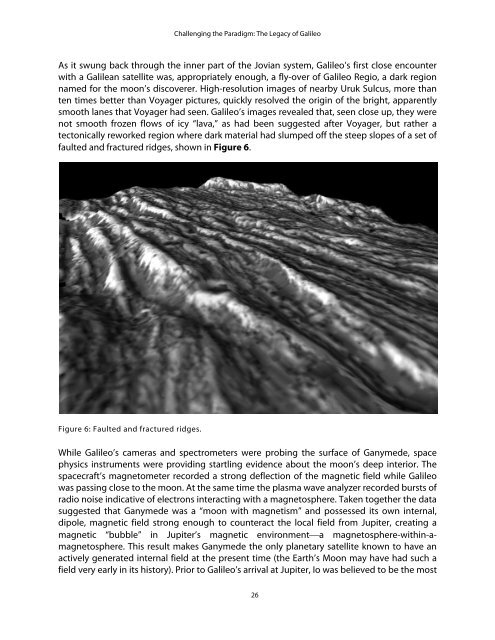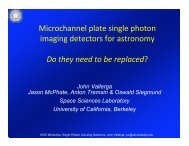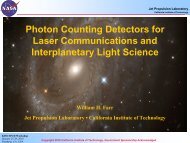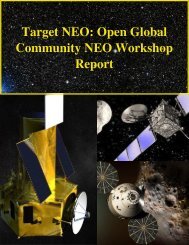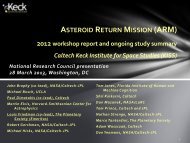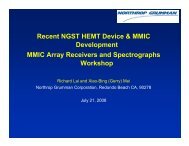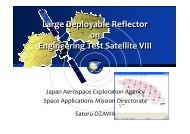The Legacy of Galileo - Keck Institute for Space Studies - Caltech
The Legacy of Galileo - Keck Institute for Space Studies - Caltech
The Legacy of Galileo - Keck Institute for Space Studies - Caltech
Create successful ePaper yourself
Turn your PDF publications into a flip-book with our unique Google optimized e-Paper software.
Challenging the Paradigm: <strong>The</strong> <strong>Legacy</strong> <strong>of</strong> <strong>Galileo</strong><br />
As it swung back through the inner part <strong>of</strong> the Jovian system, <strong>Galileo</strong>’s first close encounter<br />
with a Galilean satellite was, appropriately enough, a fly-over <strong>of</strong> <strong>Galileo</strong> Regio, a dark region<br />
named <strong>for</strong> the moon’s discoverer. High-resolution images <strong>of</strong> nearby Uruk Sulcus, more than<br />
ten times better than Voyager pictures, quickly resolved the origin <strong>of</strong> the bright, apparently<br />
smooth lanes that Voyager had seen. <strong>Galileo</strong>’s images revealed that, seen close up, they were<br />
not smooth frozen flows <strong>of</strong> icy “lava,” as had been suggested after Voyager, but rather a<br />
tectonically reworked region where dark material had slumped <strong>of</strong>f the steep slopes <strong>of</strong> a set <strong>of</strong><br />
faulted and fractured ridges, shown in Figure 6.<br />
Figure 6: Faulted and fractured ridges.<br />
While <strong>Galileo</strong>’s cameras and spectrometers were probing the surface <strong>of</strong> Ganymede, space<br />
physics instruments were providing startling evidence about the moon’s deep interior. <strong>The</strong><br />
spacecraft’s magnetometer recorded a strong deflection <strong>of</strong> the magnetic field while <strong>Galileo</strong><br />
was passing close to the moon. At the same time the plasma wave analyzer recorded bursts <strong>of</strong><br />
radio noise indicative <strong>of</strong> electrons interacting with a magnetosphere. Taken together the data<br />
suggested that Ganymede was a “moon with magnetism” and possessed its own internal,<br />
dipole, magnetic field strong enough to counteract the local field from Jupiter, creating a<br />
magnetic “bubble” in Jupiter’s magnetic environment⎯a magnetosphere-within-amagnetosphere.<br />
This result makes Ganymede the only planetary satellite known to have an<br />
actively generated internal field at the present time (the Earth’s Moon may have had such a<br />
field very early in its history). Prior to <strong>Galileo</strong>’s arrival at Jupiter, Io was believed to be the most<br />
26


